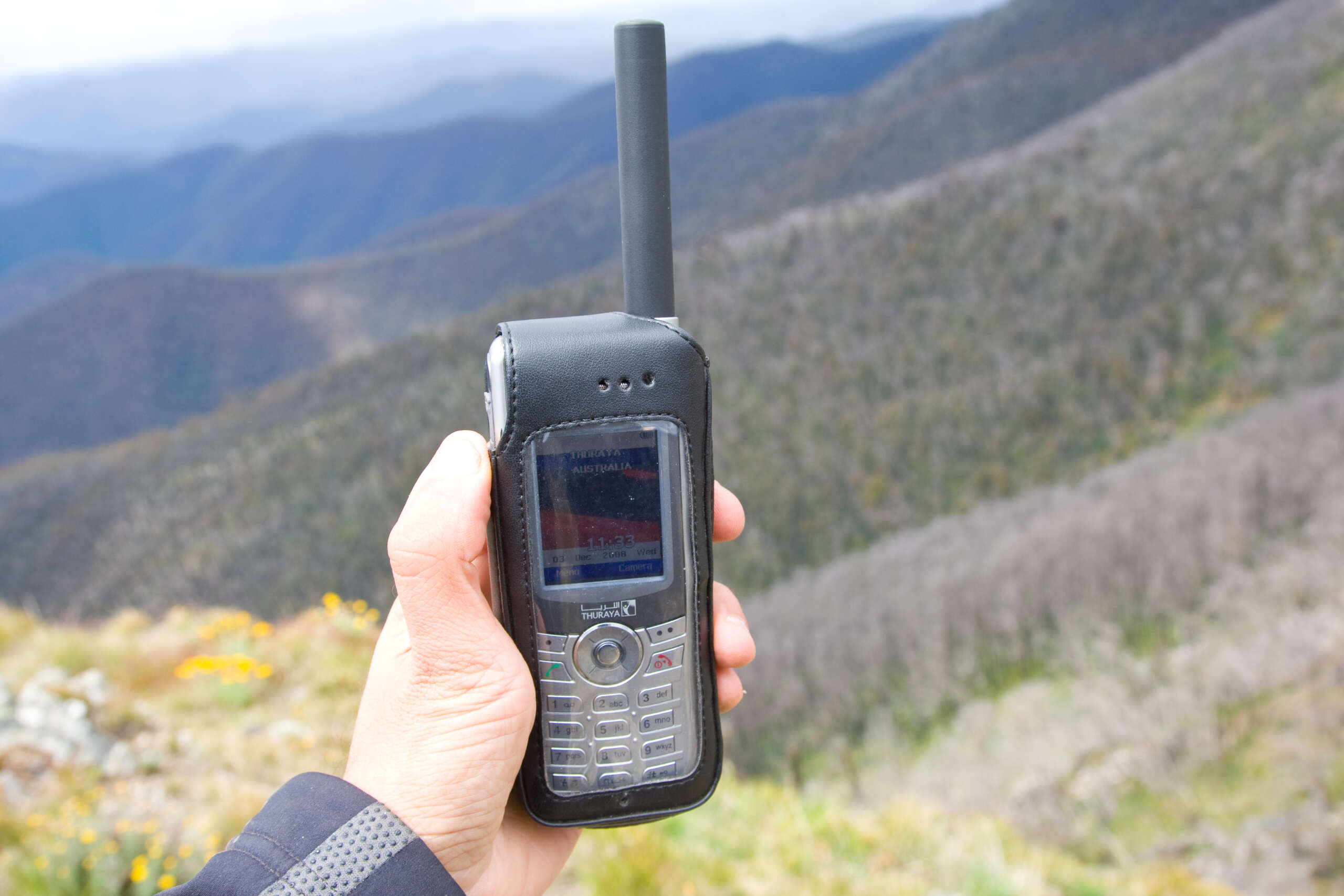
Thuraya satphone network officially DEAD in Australia: UPDATED 4/5/24
If you have a Thuraya satellite phone or device, it’s now useless in Australia. Service is gone, and will never be recovered.
To understand what’s happened it’s important to understand how the Thuraya network operates. It is a geostationary constellation, which means it uses just two satellites to cover the earth. These satellites are geostationary, around 35,000km above the earth, and from there they can cover large parts of the earth’s surface. That’s why only two are needed. The coverage map for the two satellites, Thuraya 2 and 3, is below:

In contrast, networks such as Iridium and Starlink use what’s known as LEO, Low Earth Orbit. These satellites are much closer to the earth, around 600km. That means any given LEO satellite can’t see much of the earth, so you need lots of them.
Now when networks of any description are designed you try and avoid SPOFs, or Single Points of Failure, which are things that fail and bring down the entire network.
When you’ve got many satellites, losing one isn’t a huge problem, another will fly by sooner rather than later, so service is degraded a little but not lost entirely. And you’ve probably got another one ready to launch soon anyway. But when you’ve only got two satellites, losing one is a big deal. And this is what has happened to Thuraya.
On Thursday 16th of April, Thuraya 3 suffered an outage. You can see in the map above how that affected coverage. For a few days the company struggled to get it back operational. And today, Thursday 2nd May, it gave up the fight and declared the satellite non-operational.
That means there is no Thuraya service in Australia any more, and no plans for resumption. Given the developments around Starlink, I am extremely confident the Thuraya network will never be restored to service. It was a dead technology already, and this massive blow to its reputation is not in my view recoverable.
Pivotel, the distributor for Thuraya services, says:

That’s pretty major. “Can no longer be used”. “For the forseeable future”. And “unable to continue to supply”. And “terminated the Service Provider Agreement”. These are not terms that speak of a minor outage.
So where does this leave customers? Pivotel says:
we are working hard to put together a selection of special offers to enable our Thuraya users to move to another satellite phone network and we will email you with the special offers available to you in the coming days.
Please bear with Pivotel; this is not their fault, nothing they can do about the service. All they can do now is pick up the pieces.
I am truly sorry to see this happen as many people will have invested in, and trusted Thuraya. Disappointingly, I could not find any mention of the outage, and now the service termination, anywhere on Thuraya’s websites. This speaks of a company that would prefer to hide problems affecting its customers rather than communicate honestly with them. Losing half your satellite coverage would, one thinks, be worthy of noting on the corporate website?
It is not clear if Thuraya 2 is still operational; it appears to be, so suddenly there will be a lot of Australia users selling satphones which will work in the likes of Africa and Europe. So, if you want a cheap satphone in Thuraya 2 coverage areas…check Australian sellers, there’s about to be a lot for sale at very cheap prices!
The Thuraya 3 satellite is a Boeing 702, launched on 15th January 2008. It originally had a 15-year life according to Wikipedia.

Thuraya-3 was launched on 15th Jan 2008, so its original 15-year lifespan ended in 2023. From Boeing:
Thuraya-3 is the third Boeing-built 702 Geo-Mobile satellite for Thuraya Satellite Telecommunications, a leading multiregional mobile satellite operator. The satellite was launched Jan. 15 aboard a Sea Launch Zenit-3SL rocket.
UPDATE 04/05/2024
Pivotel have updated their FAQ to say that the T3 life was extended to 2031. They also say “based on that review neither Pivotel nor Thuraya could have reasonably anticipated the Force Majeure event that has occurred. Well, if you have a component that is single point of failure that was originally designed for a given life, and then that life is extended presumably without any changes…I would suggest the failure is entirely foreseeable. But I’m not a lawyer.

If you want help choosing remote-area communications, the please watch my video below which covers all the options…just ignore the bit about Thuraya but I didn’t recommend them anyway.


